Best Guppy Tank- The Ultimate Beginner's Guide
From what material to the best filter- everything you possibly need to know.

The Best Guppy Tank
Best guppy tank- is that even a thing?
I remember feeling so overwhelmed when I was first starting out.
There are so many options, parts, and pieces. They are not terribly expensive, but they add up. and which one do you really need?
Well, in this guide I’ll not only teach you what is the best guppy tank, but how to navigate the world of aquarium equipment.
We’ll cover the best heater, the best filter for guppies, and every other piece of equipment you may possibly need to get your tank started.
What You'll Learn
Part 2
Pump & Filter
Why is a filter pump important?
The 3 types of filters
The 3 types of filtration
How to choose a filter
How to maintain a filter
Air pumps
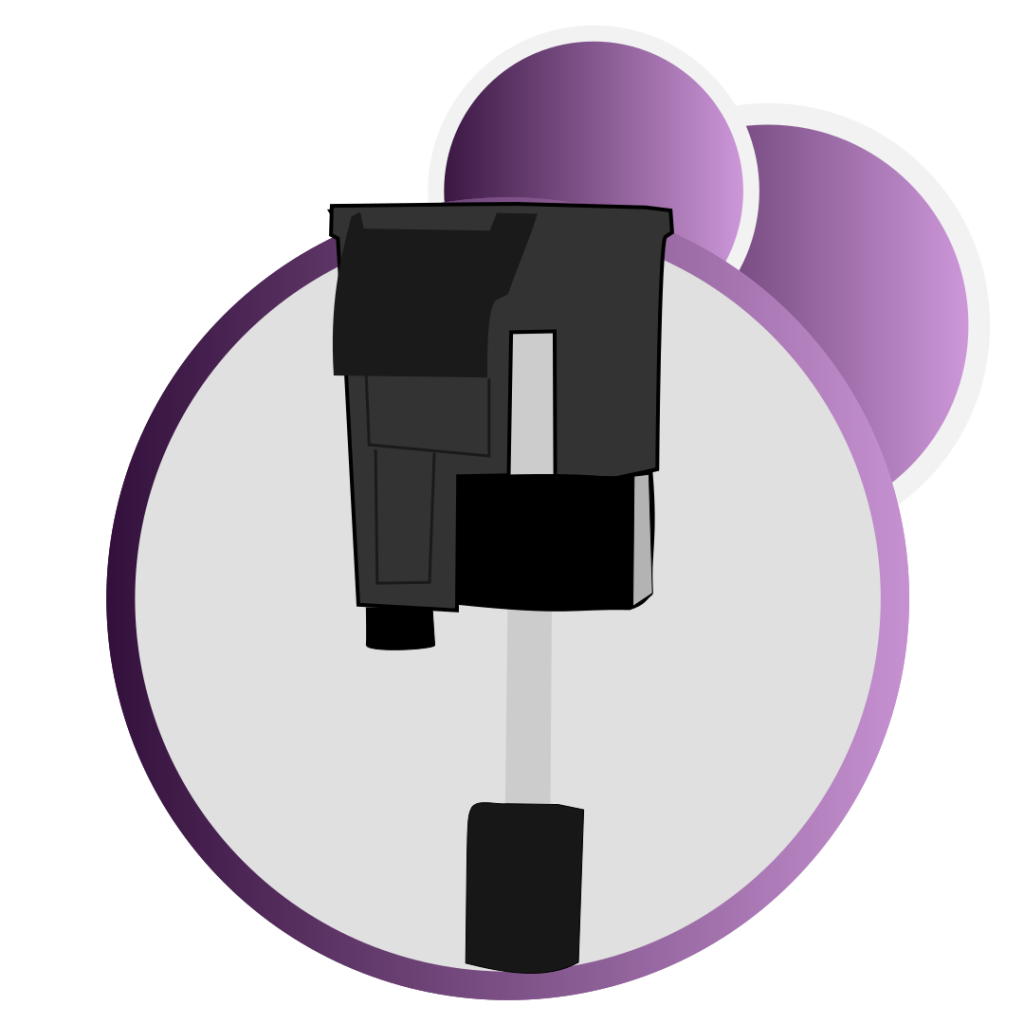
What Is A Filter Pump Important?
The filter takes on the critical role of being the “heart” of the tank, keeping the water flowing.
This serves a couple of purposes:
Prevents Stagnation
Stagnant water can become moldy, which will crash your tank and kill your fish.
Prevents Harmful Ammonia Buildup
Ammonia is a natural byproduct of leftover food and fish poop breakdown. While it can be harmful and toxic to fish on its own, it also breaks down and creates nitrite- which is even deadlier to fish.
Helps Oxygenate The Tank
Guppies still need oxygen, and one way to introduce it into the tank is by using a filter.
Without enough oxygen in the tank your guppies may become sick and you’ll be opening the door to 19 different guppy diseases that can put your tank at risk.
Quick Summary
All in all, filters save you time by cleaning the water for you. That means you get to spend less time stressing over water quality and get to spend more time enjoying your tank.
Best Filter for Guppies- The 3 Types Of Filtration
So we’ve made it clear that a filter in a key part when you’re building the best guppy tank setup.
Since the industry has to cater to a pretty diverse range of needs it has created a lot of options and ways to achieve filtration.
The reason I bring it up is that when I was first starting, I totally went down the rabbit hole. That means I read tons of articles- and only a handful were practical.
To make this easy on you I’ll go over the most popular types of filters and most popular types of filtration.
If that doesn’t make perfect sense right now- don’t worry. It will once we get there.
Mechanical filtration
The way mechanical filtration works is pretty simple- it uses a very course and dense mesh-like material to separate physical poop and leftover food.
Its biggest benefit is removing debris from the tank floor so they don’t decompose in the tank.
When you use mechanical filtration you reduce the amount of time you have to clean the bottom of the tank.
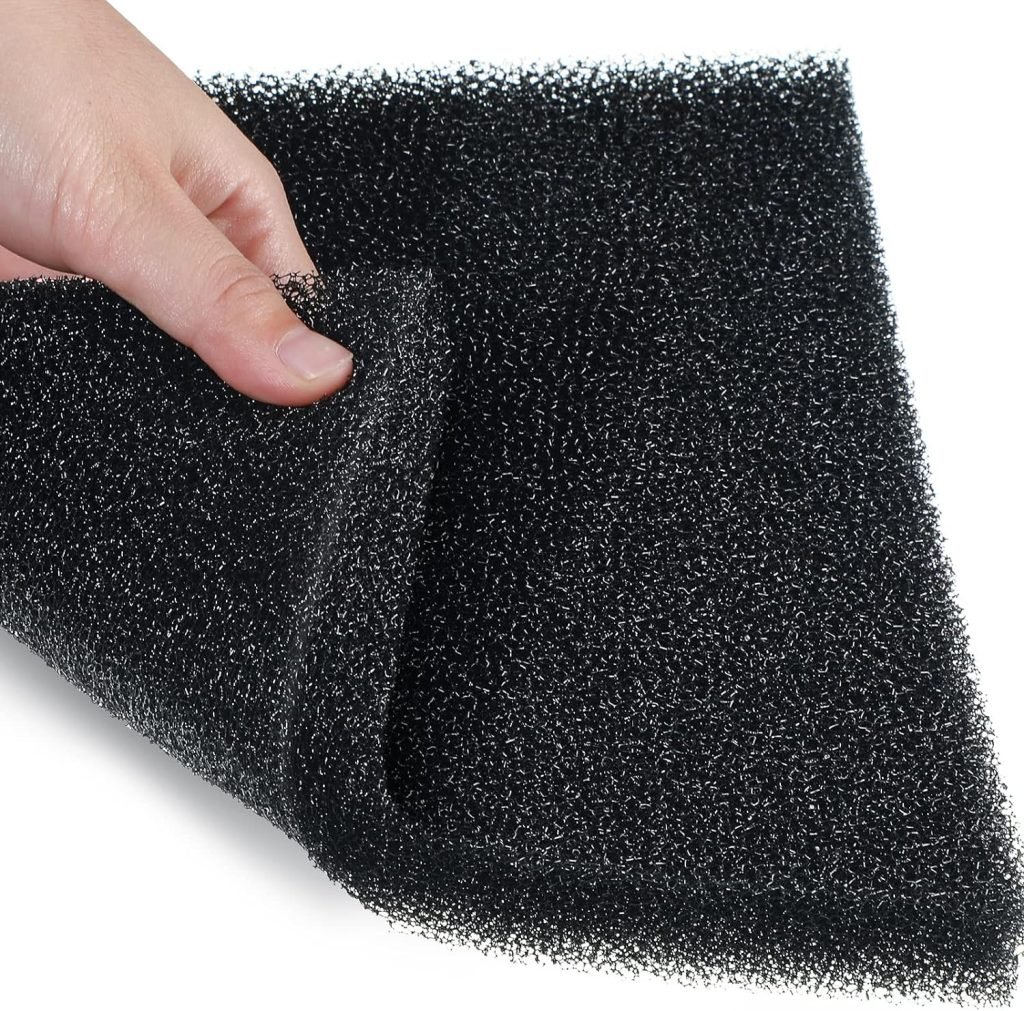
Biological filtration
Biological filtration is designed specifically to remove ammonia from the tank water.
It works by hosting beneficial bacteria in the filter medium which convert the ammonia into nitrite and then immediately into nitrate— which your fish are much more tolerant of, and plants can use as a nutrient.
It does take a while for that beneficial bacteria to start working, what is usually referred to as the seasoning stage. A filter will be considered seasoned once it’s been in operation for about five to 6 weeks.
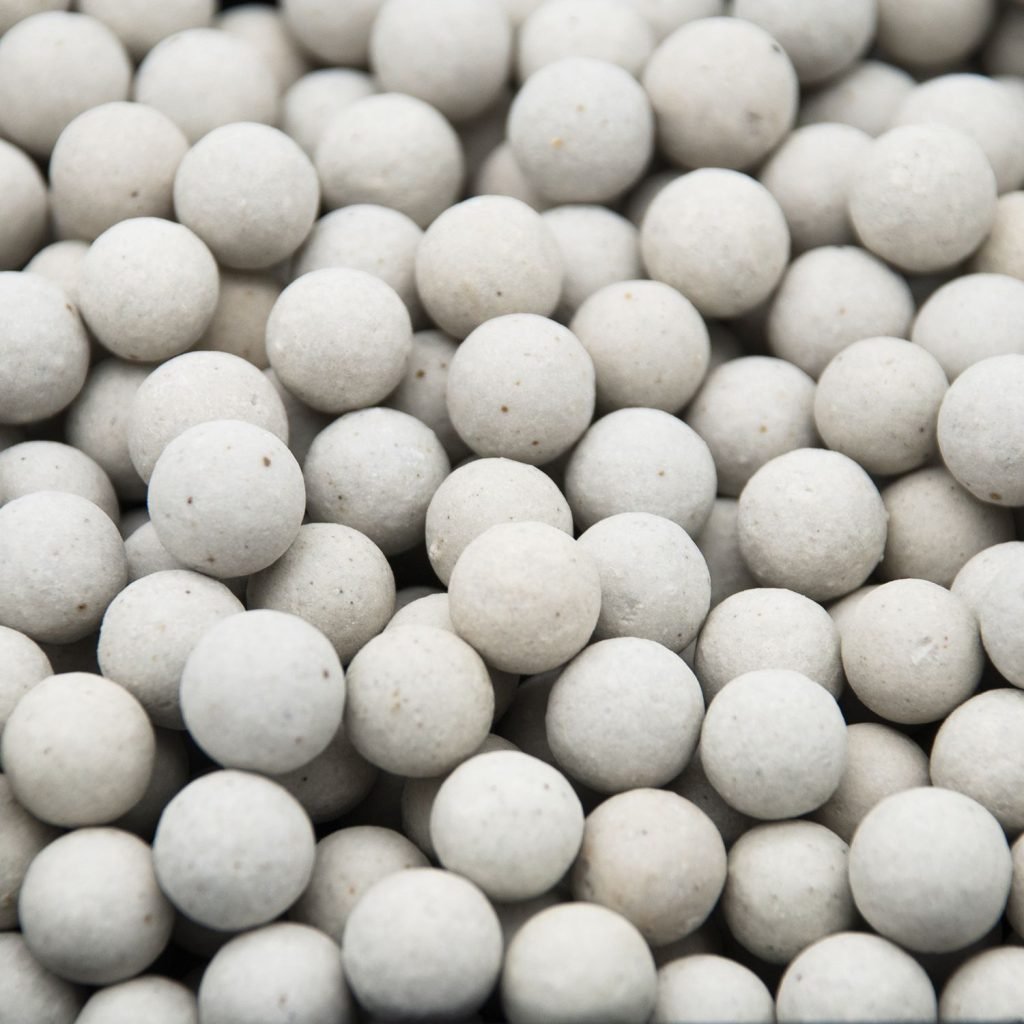
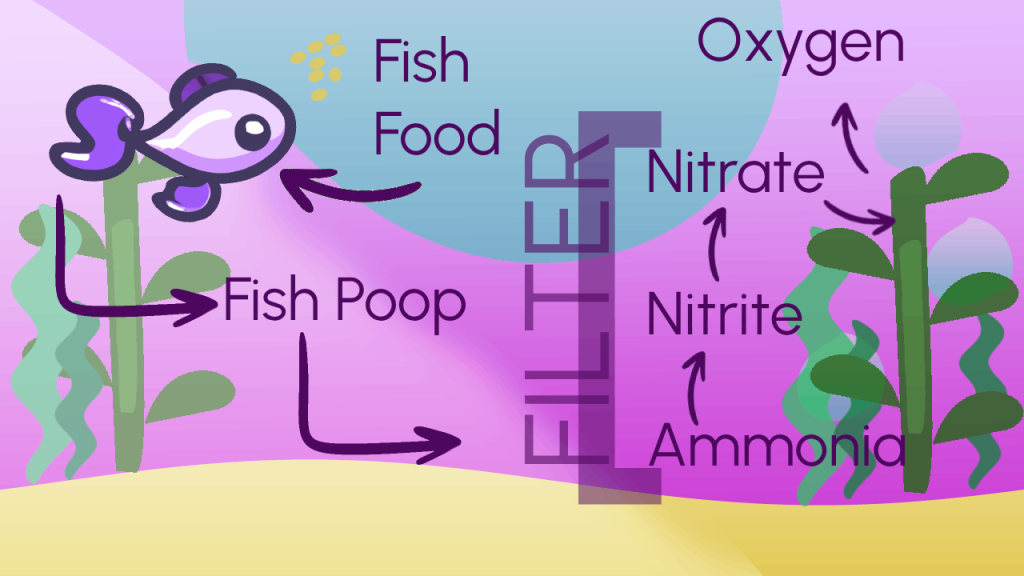
Chemical Filtration
This process is very similar to mechanical filtration, where carbon will catch debris from the water and chemicals.
This will prevent discoloration in the tank water.
While I used a picture of activated carbon, there are many ways to achieve chemical filtration. Filters can can zeolite, oxide and much more
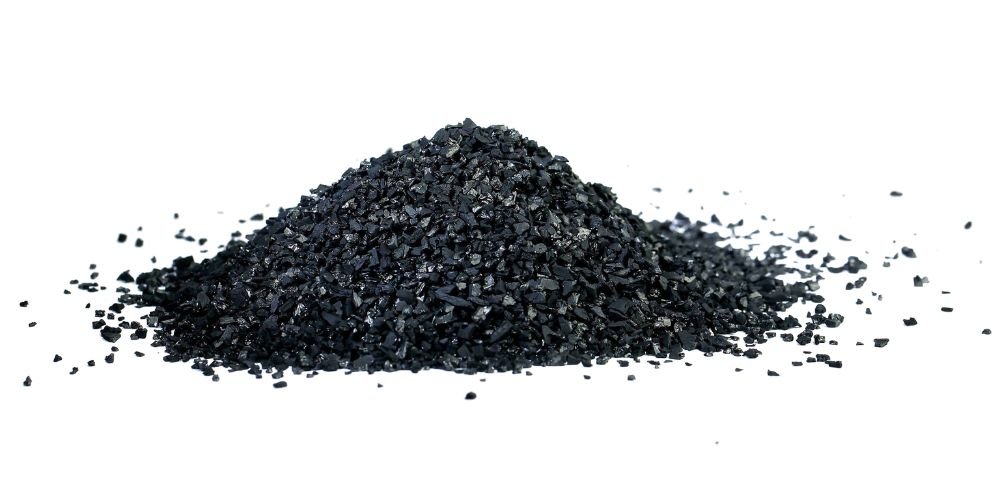
Which One Should You Choose For The Best Guppy Tank Setup?
Plot twist- all 3!
a lot of filters on the market will combine all 3 methods of filtration in a single filter.
My advice to you, as a beginner, is to make sure that the filter you get incorporates all 3. This doesn’t raise the price much, but makes it a lot easier on you.
Now that we have what to look for in a filter, let’s continue building the best guppy tank setup and look at the different types of filters you can get.
Best Filter For Guppies
Now that you know what type of filtration to go for, let’s talk about what kind of filters are available to the first-time guppy tank owner.
Hang-On-Back Filter (HOB)
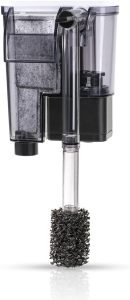
This filter will hang on the back of the tank and provide filtration and water circulation by sucking the water in and returning it through a sprout. It’s my go-to filter because:
- It’s fool-proof. Plug it in, hang it on the tank. Done.
- It will most likely use all 3 types of filtration.
Hang-on back filters are very popular for one reason— they are extremely low maintenance and easy to clean. If you ever decide to grow your tank you can just use two of them instead of switching to a more complex filtering system.
Sponge Filter
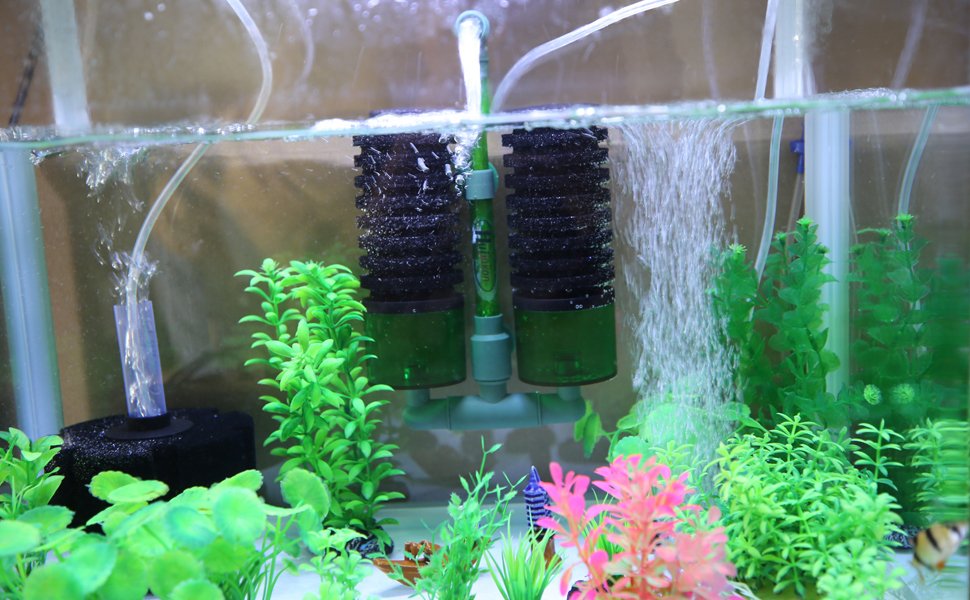
Made of spongy material, this filter is placed inside a tank. It works by placing an air pump on the outside of the tank which triggers the suction function of the filter.
Compared to the hang-on back filter, which comes as a single piece, this will require 2 parts:
- The filter media (the spongy stuff), and
- An air pump
The only reason I’d recommend this to a beginner is if you’re neurotic about aesthetics. You can kind of hide the filter in certain angles by placing plants in front of it. Then you can also place it on at any level of the tank.
Since I’ve just mentioned the air pump but haven’t talked about it before, let’s take a quick moment to cover what they are.
Air Pump
An air pump is a device that sits outside your tank and pumps air into the aquarium.
It is usually routed through the bottom of the tank using airline tubing which creates bubbles that race to the surface and pop.
That helps achieve gas exchange which removes harmful carbon dioxide from the water. Instead it introduces oxygen that your fish needs.
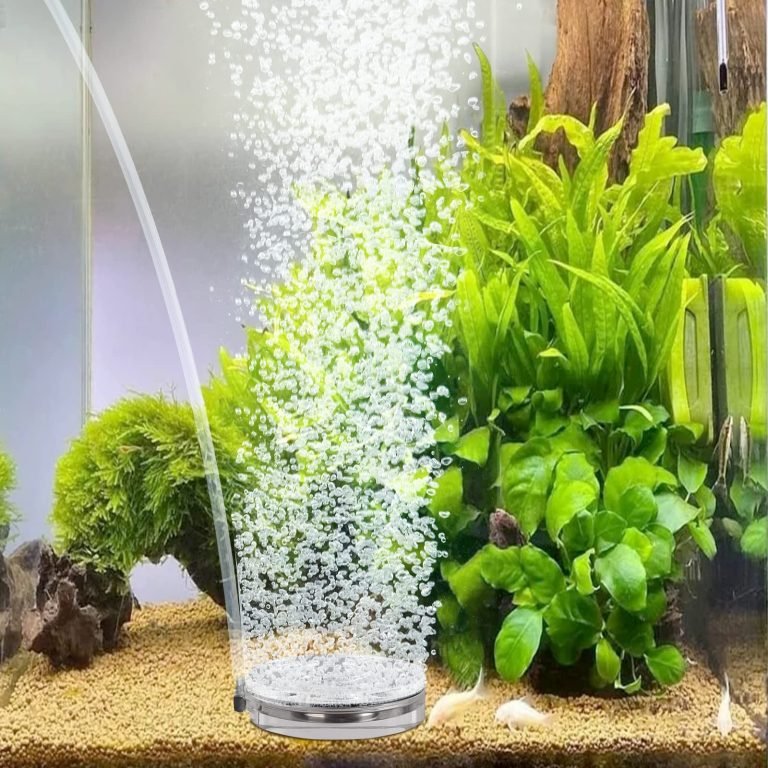
Why do I need an air pump?
You only need an air pump if you’re going with a sponge filter. Without the pump, the filter will not work.
Another reason to get an air pump is to help infuse the tank with oxygen. Imbalance is oxygen can throw off your pH or cause your guppies to congregate at the corner of the tank.
If you’re going with a hang-on back filter, I would hold off on getting the air pump.
Canister filters
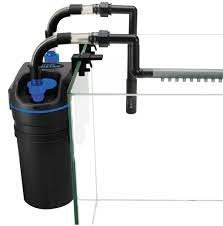
Canister filters are designed for tanks that are at least 30 gallons and up. They are the most powerful, least visible options on the market when it comes to tank filtration.
They’re usually hidden in the cabinet that the aquarium sits on with the only two visible parts are the intake and return lines— which can be exchanged for glass or steel pipes to show even less.
Canister filters are also the most expensive on the market, ranging from 50 to 600 dollars.
Pro Tip
Choose a filtration system that can move the entire content of your tank water at least six times an hour.
That means that a 10-gallon tank should have at least a 60-gallon per hour pump.
A 20-gallon tank should have at least a 120-gallon-per-hour pump.
How To Maintain A Filter
It is important do you remember that even though the filter did filter the water— the debris still in the filter. That means that the filter itself has to be cleaned.
If you’re using a mechanical filter it can be either changed or simply rinsed in the sink using sink water.
If you’re using a chemical filter media it will need to be replaced every four to 6 weeks.
If you’re using biological filter media make sure to never wash it with typical sink water. The reason for this being is that sink water contains chlorine which will murder your beneficial bacteria and cause your tank to crash.
Instead of using sink water, use preconditioned tank water to rinse out the debris out of the media.
You can still wash it in the sink, just don’t use sink water.
Best Water Heater For Guppies
A water heater is designed for one specific reason- maintain a constant water temperature.
Your guppies need a water temp between 78-82 F in order to be happy and grow to their full potential.
But how do you actually choose a water heater? do you need a display or should you get a a 2 in 1?

Why You Need A Water Heater
To answer that, we’ll take an alternative route- what will happen if you don’t have one.
The water temperature flactuates throughout the day. It’s colder at night and warmer during the day.
While it sounds typical to you- this is a guppy’s worst nightmare.
Guppies are really good at getting stressed out, even at the smallest things. while they can be accommodating of different water temps, they can’t tolerate swings.
That means that the water has to be constant. If you need to change the water temp— then it has to be a gradual change.
Why Not Just Put The Tank By The Window
Your natural thought is probably to just put your guppies by the window. That way the sunlight can provide light for your plants and heat the tank at the same time.
But here is the issue— the sun goes up and it comes down. With it, so do temperatures.
That means that your tank will have HUGH fluctuations. The temperature can also rise way above the recommended 84 degrees that guppies can take.
Remember— the higher the water temperature— the less oxygen is available in the water. So if they don’t get cooked- they’ll drown.
That’s why you need a heater.
Pro TIp
Budget for about 5 watts of heating power for about every gallon of water. But a both a 10 and a 20-gallon tank will work fine with a 75 watt heater. A 25-gallon tank will call for a 100 watt heater.
What Is The Best Heater For Guppies?
Submersible Heater
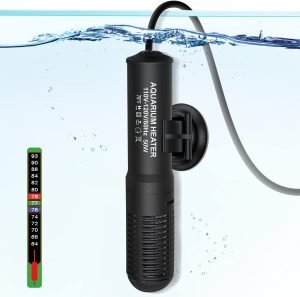
A submersible heater goes below the water level. They usually come with either a plastic or glass body that protects the electrical and heating elements.
Those are fairly popluar mostly becuase they can be positioned everywhere in the tank. They attach via suction cups, plug into the wall- and you got yourself a working heater.
They work well for small to medium size tank. a submersible heater should cost anywhere from 10-30 bucks.
Hang On Heater
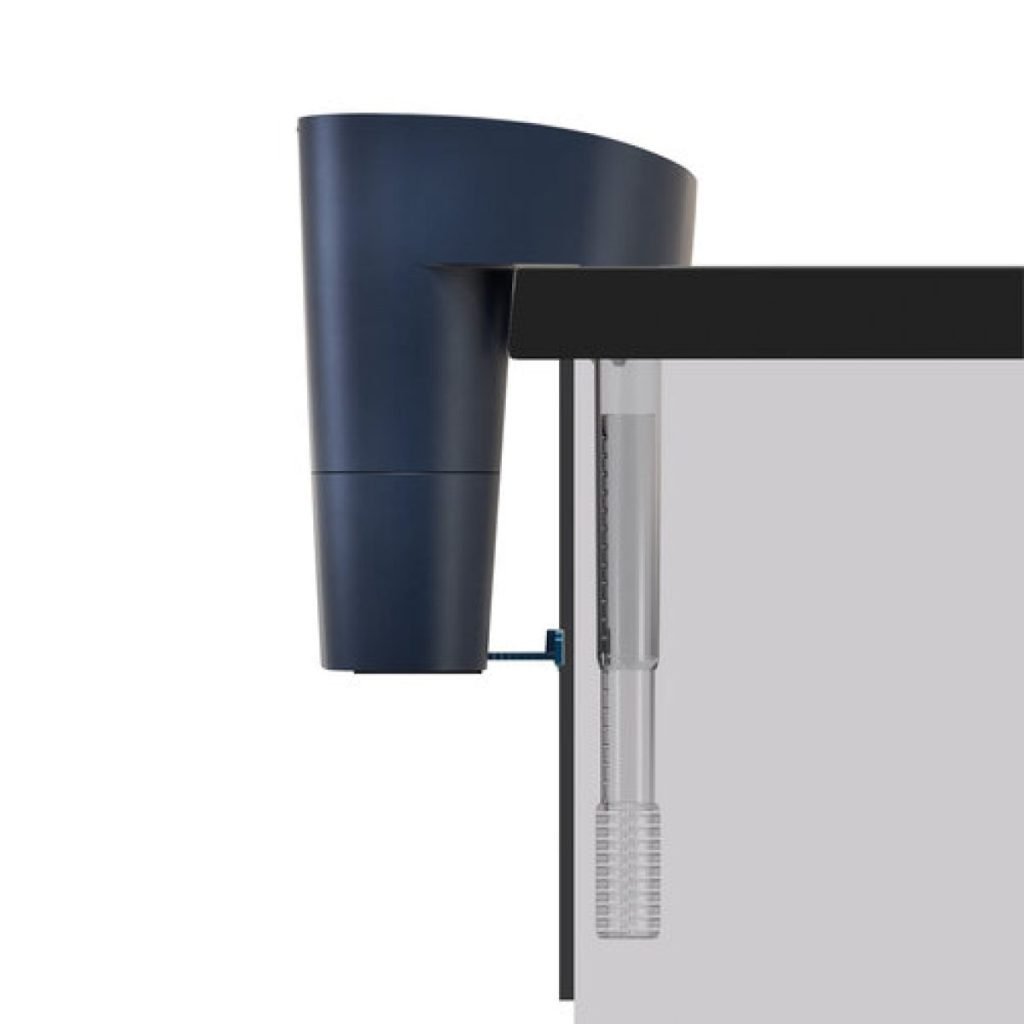
Hang-on Heaters usually come in stock when you buy a tank kit- which is perfectly fine. They’ll also be a part of the filter in some cases.
They mount to the top of the tank in fixed position (unlike the submersible which can be mounted anywhere).
They work for smaller tank set ups. unless you plan on having angelfish with you guppies- you’ll be fine with a hand on heater.
Substrate Heater

We’re not gonna talk about substrate much today. so for now, know that it’s what goes on at the bottom of the tank. You can read about substrate in our complete guppy plants guide.
It’s usually gravel or rock but could be any substance that isn’t big enough for the guppies to eat.
Substrate heaters work by getting buried in the substrate and then heating it up. That creates a hot bottom that radiates heat throughout the tank’s water and creates an incredibly even temperature.
Guppies don’t require this level of precision heating, so they are not as common as the other 2.
Not that you need to know this, but substrate heaters are used in tanks that call for a temp that’s too cold for the plants’ roots. By heating the substrate the roots stay warm and happy without altering the tank’s temp too much..
Best Light For Guppies
And Other Miscellaneous Equipment
Why you need guppy lights
How to choose guppy lights

Do you need Guppy Lights?
Lights are what I call a nice to have when you’re building the best guppy tank for beginners.
You can’t them in the darkness around the color- guppies rely on their eyes to see food and swim around. but if you place them in a room with natural light (but away from the window!) you should be fine.
With that said, I want you to know that there are 2 reasons where you need lights:
You Want A Dramatic Look For The Tank
Lights are a big part of making tanks look pretty, and with the right light, you can create a very specific look in your tank.
FYI, the lights should be on a timer, if the timer isn’t built in.
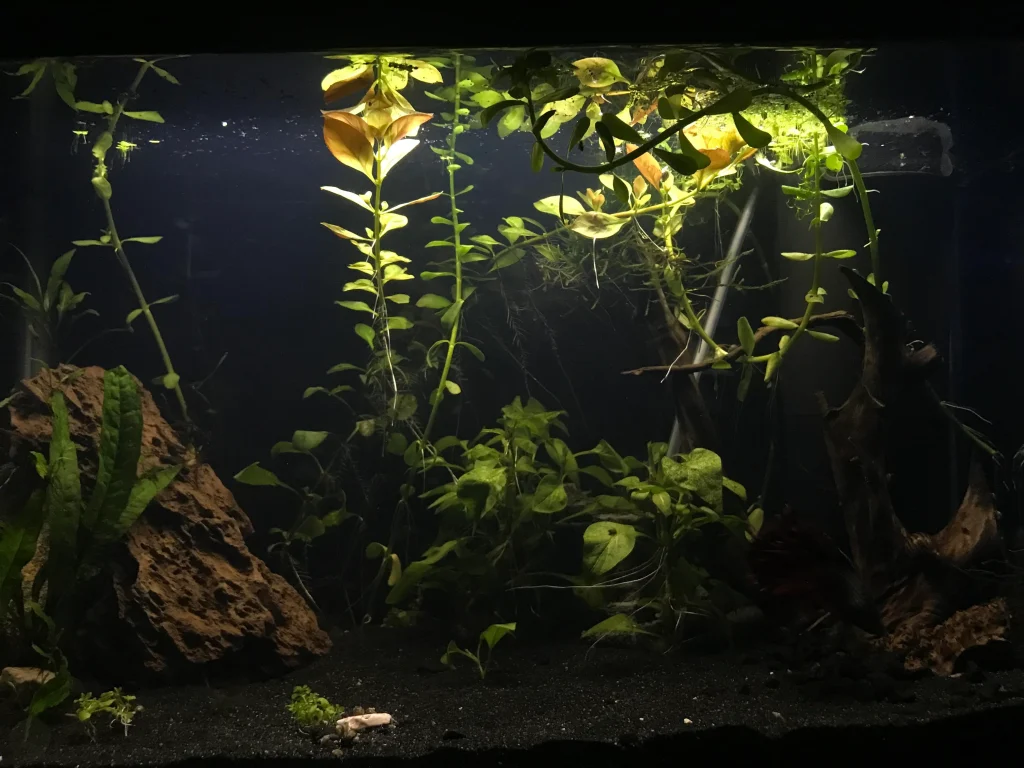
You're Doing A Planted Tank
Whether to go planted or not is a matter of personal preference. I’ve had both, and it really depends on how much you want to care for your tank.
From a practical standpoint, it’s another thing you have to monitor and care for. Here are some of the pros and cons of a planted tank:
Pros
- Makes the tank prettier
- Acts as a natural water filter
- Oxygenates the water
- Absorbs carbon dioxide
- Reduces guppy stress
- Competes with algae for nutrients
- Limits excessive light
Cons
- Another step at setup
- Pruning, trimming, and replanting needed
- Specific care and nutrient supplementation
- Requires testing and adjustments
- Potential for plant diseases
- Cost considerations
- Learning curve
How To Choose Guppy Lights
Good news- your guppies don’t need a fancy light.
Matter of fact- they’ll be fine with a simple florescent or LED light. Unlike vegetable plants, your plants are not going to require a full spectrum light.
That means that a plain white light will get the job done.
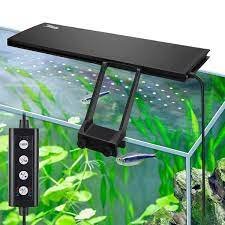
Misc Equipment You'll Need

Gravel Vacuum
Instead of draining your tank and rinsing your gravel- simply use the vacuum. It’ll remove debris while minimizing the risk to beneficial bacteria living in the gravel.

Water Testing Strips
Testing strips give you a snap shot of what’s going on in your tank. Based on the result you’ll know whether to change waters and how much.

Fish Net
Your fish net will make transporting guppies a breeze. It will also minimize the risk of them getting injured during water changes.

Bucket
Sounds too simple- I know. Keep a bucket of conditioned water at room temperature for emergencies.
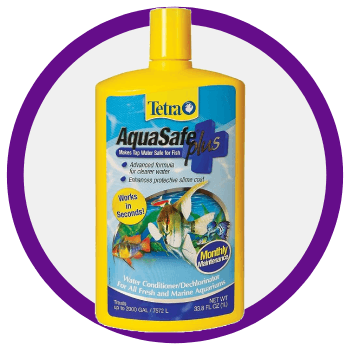
Water Conditioner
Because chlorine is deadly to fish you’ll need to use a dechlorinator. Most water treatments will also include mineral and plankton to serve us a food source.
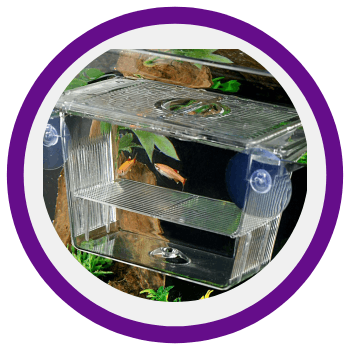
Breeding Box
Only necessary if you plan on breeding guppies without setting up a secondary tank. You’ll use this box as a safe space for the pregnant female to give birth.
Equipment Reviews

How Many Guppies Will you have?
Step 1- Figure out how many guppies will you have.
Up to 7 guppies = 10-gallon tank
Up to 10 guppies = 15-gallon tank
Up to 13 Guppies = 20-gallon tank
Up to 20 guppies = 30-gallon tank
Guppy Tank Kit VS A La Carte
Kits are awesome. Here, I said it.
They are simple, straight forward and they take out all to thinking out of the process. I will mention both kits and stand-alone tanks here, so the choice is yours.
The only thing about a kit is that you still need to get a heater.
But it will take care of the lights and filter questions.
For each category, I’ve found the best of each- one that’s a kit and one that’s a la carte.
for each product, there’s a list of recommended products to get along with it

Best Guppy 5 Gallon Tank
Best Stand-alone- Tetra Glass Aquarium 5.5 Gallons

16" L x 8" W x 10" H
Measurements
Glass Material
Glass Construction
3 Guppies
Max Fish Capacity
Tetra has been a well-known player in the tropical fish game for a long time.
This Glass tank is a great fit for a small guppy tank. It’s made out of glass- which means it’s very sturdy and easy to clean both inside and outside.
It’s definitely a blank canvas to get you started with the hobby, with it’s minimal footprint making getting in very convenient.
Please note that 5 gallons may be too small for guppies. You’ll only be able to fit about 3 fish, which isn’t enough to satisfy their social needs.
Pros
- Glass design makes cleaning easy
- Compact design allows placement even on desktops
- Its modest footprint makes tank maintenance quicker compared to larger models
Cons
- Additional equipment is required before fish can be introduced
- May not be a good, long-term fit for adult guppies
- Limited space will not allow effective breeding
Water heater, pump, lid, lights
Best Guppy 5 Gallon Kit
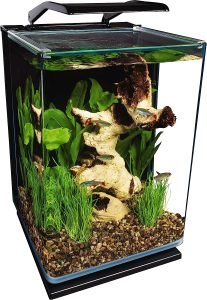
9.5" L x 9.5" W x 14" H
Measurements
Glass Material
Glass Construction
3 Guppies
Max Fish Capacity
The Marineland 5-gallon guppy kit is a great choice for a small start tank.
The setup is very easy- you just assemble everything and put it in its place- boom, it’s done. Since it’s a done-for-you solution it relieves you from having to design the equipment placement within the tank.
It has a very small footprint of less than a foot in length and width, which allows it to be placed on desktops and other small areas.
Please note that 5 gallons may be too small for guppies. You’ll only be able to fit about 3 fish, which isn’t enough to satisfy their social needs.
Pros
- Setup includes tank, lights and pump
- Hidden filter makes the tank prettier
- Removes the hassle of esthetically designing filter placement
Cons
- Too powerful of a filter for this size will require unplugging at when feeding
- Constructions make certain areas hard and inconvenient to reach
- The filtration unit is located at the top of the tank and creates a need to monitor and clean the bottom.
You’ll also need: water heater, a surface plant like duckweed. It will help prevent your guppies from jumping out (yep, they just do that randomly)
Best Guppy 10-Gallon Tank

20" L x 10" W x 13" H
Exact Measurements: 20.07″ L x 9.84″ W x 12.6″ H
Glass Material
Glass Construction
7 Guppies
Max Fish Capacity
This tank would be ideal for those who just want to dip their toes on the smallest scale possible.
Made of glass so it’s easy to clean- it is just a blank canvas to get started with the hobby.
With a tank like that, you’d build your desired setup by adding a filter, heater, and lights. Because of its open design, you are able to eliminate had-to-reach areas that are more common in kit tanks.
Pros
- High-end rimless design allows greater esthetic versatility.
- Glass design makes it easy to clean as razors can be used to scrape algae.
- Allows for maximum design and equipment customization
Cons
- Places the “burden” of designing the tank’s functionality on you
- May not be compatible with a deep substrate set up as the tank is very long
- Rimless design may be more prone to cracks if dinged
You’ll also need: water heater, filter pump, lights, lid, substrate, plants
Best Guppy 10 Gallon Tank
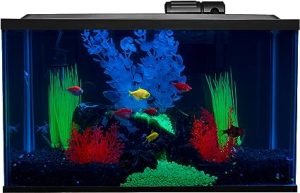
20" L x 10" W x 12" H
Measurements
Glass Material
Glass Construction
7 Guppies
Max Fish Capacity
So this kit is on the pricier side of things- but bare with me for a second- I put it here for a reason.
This kit comes with everything you need.
Filter? Done. Heater? Yep. Lights? Yes. Even the fake plants are included.
They also give you the water conditioner you’ll need to start cycling your tank (all about that in the next chapter)
Pros
- Full setup- just get substrate and fish
- Includes everything you need so you don’t forget necessities.
- Removes the burden of designing the tank’s functionality.
- Streamlines esthetic design by providing fake plants and design ideas.
Cons
- On the upper end of the pricing scale
- Will require a bit of modification as the filter pump may be overpowering at some parts
- Some parts of the tank are made of flimsy plastic
You’ll also need some real plants, although optional. You can just get the kit and see how your oxygen levels are. If your guppies spend a lot of time the corner of the tank then you may need plants or an air pump.
Best Guppy Tank: 15-Gallon Kit
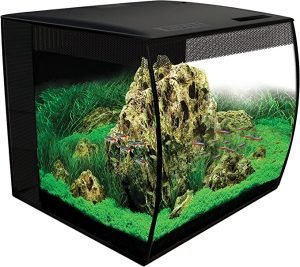
16" L x 17" W x 16" H
Exact Measurements:
15.94 x 16.73 x 15.94
Glass Material
Glass Construction
10 Guppies
Max Fish Capacity
This tank has been rated as Amazon’s best overall tank for beginners.
Maybe it’s the size, at 15 gallons its still small enough. But it allows you to fit about 10 fish- which would be an ideal number for guppies that allows for longevity as well.
It comes with a lid, lights with 80 different color combinations (totally unnecessary but we’ll go with it), and a pretty clever filtration system utilizing all 3 methods.
Pros
- Setup includes tank, lights, and pump
- Hidden filter in the back makes the tank prettier
- Great size for beginners
- Removes the burden of designing a functional tank by placing equipment in a pre-designed space
Cons
- Will require a water heater
- Will require substrate and plants
You’ll also need: Water heater, substrate and plants
Best Guppy Tank: 20-Gallon Kit

28" L x 16" W x 20" H
Exact Measurements:
27.88 x 16.13 x 20.38
Glass Material
Glass Construction
13 Guppies
Max Fish Capacity
This 20-gallon kit is great for anyone who is looking to get started with a decent size tank.
It comes with a heater, filter, and lid with lights built in, along with fake plants. That means you’d only have to add substrate, run your tank to get it ready (more on that in the next chapter), and add your fish.
This kit really takes all the thinking that goes into designing a tank (like filter placement, heater placement and so forth) and does it all for you.
When you open the box you’ll see that it very much pulls you towards the neon fish kind of look. But don’t you worry- it is fully customizable and you’ll be able to have different looks as well just by getting different decor.
Pro Tip: 20-gallon tanks are much easier to balance for beginners as the water is less vulnerable to fluctuations.
Pros
- Comes with everything you need- even water conditioner samples.
- Highly customizable allowing you to achieve different looks without buying additional equipment
- No need to plan filter and heater placement- comes with all hardware in pre-designed spaces
Cons
- The lid is made of flimsy plastic which requires care when maintaining the tank
- Filter tubing sits a little too short and may need to be extended by 3 inches with additional tubing. Without extension, more frequent care would be needed.
You’ll also need: Water heater
Best Guppy Tank: 20-Gallon A La Carte

24" L x 12" W x 16" H
Exact Measurements:
24.4 x 12.2 x 15.74
Glass Material
Glass Construction
13 Guppies
Max Fish Capacity
If you are looking for maximum customization and complete freedom to design- then this is the tank for you.
Featuring a modern rimless design, this tank gives you all the creative freedom to design both equipment placement and visual elements.
This tank gets most of its volume from height and length- giving your fish different depth levels and plenty of places to swim arrow and entertain.
Pro Tip: 20-gallon tanks are much easier to balance for beginners as the water is less vulnerable to fluctuations.
Pros
- Modern rimless design allows for maximum visibility.
- Total creative hand with equipment placement
- Total freedom with esthetic design
Cons
- May be vulnerable to nicks and dings if hit directly.
- Will require all other equipment
You’ll also need: water heater, filter, lights, lid, substrate and plants
Best Guppy Tank: 30-Gallon A La Carte
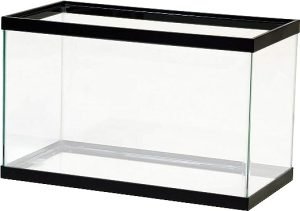
30" L x 12" W x 18" H
Measurements
Glass Material
Glass Construction
20 Guppies
Max Fish Capacity
At 29 gallons you’re met with almost endless possibilities when it comes to getting a tank for your guppies.
You can fit big pieces of driftwood, and multiple plants and create a pretty serious ecosystem in it.
If you plan on breeding guppies, this will definitely be able to hold a breeding box to protect the fry from the adults as they are still developing.
Pros
- Reliable, well-trusted brand
- Endless possibilities with equipment placement and creative design
- Able to fit a good amount of fish
- Able to fit larger pieces of driftwood and other decoration
- Very accommodating to guppy breeding
Cons
- Will require you to design and place equipment as needed
- Silicone on joints may be a little too visible.
You’ll also need: water heater, filter, lights, lid, substrate and plants
Best Hang-On-Back Filter For Guppies
Penn-Plax Cascade 100 Power Filter
The Penn-Plax is a game changer. No, really. a game changer.
It is almost hard to explain how quite this thing is.
Set up has never been esier- just hang it on the back of the tank, plug it in and turn it on. Poof- you’re done.
With it’s adjustable flow control you’re able to increase and decrease the water flow- which will come pretty handy at feeding times.
In addition to that it also features a triple action filter that removes toxins from the water, sucks out waste and promotes positive bacteria that helps you keep a balanced tank.
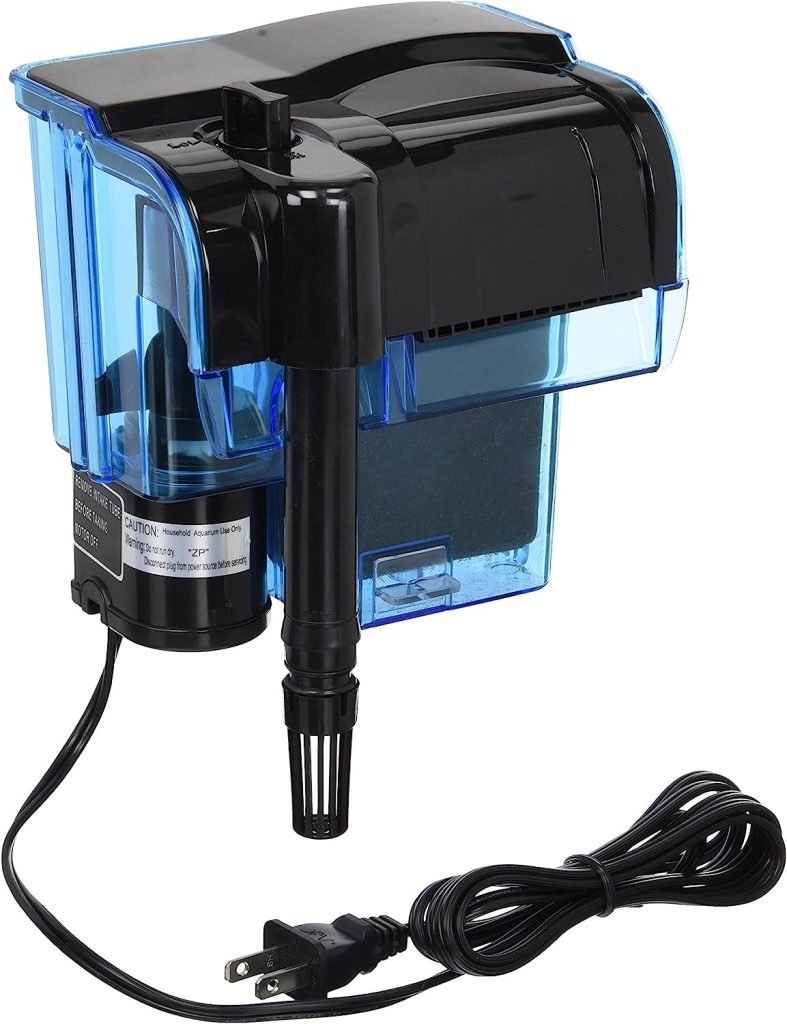
Best Submersible Filter for Guppies
CHERLAM Submersible Aquarium Filter
This little bonus piece is what I think is one of the most versatile pieces of equipment out there.
This fully submersible filter features a triple action fitration system to remove toxins from the water, clean up solid wastes and improve the over water quality of the tank.
It also doubles down as an oxygen pump to give your fish more available oxygen.
Lastly, it also features a pump that can be used to drain the water from the tank while changing water.
All in all, it means this filter will reduce the amount of hours you spend caring for your tank, and make your life easier when you caring for it.
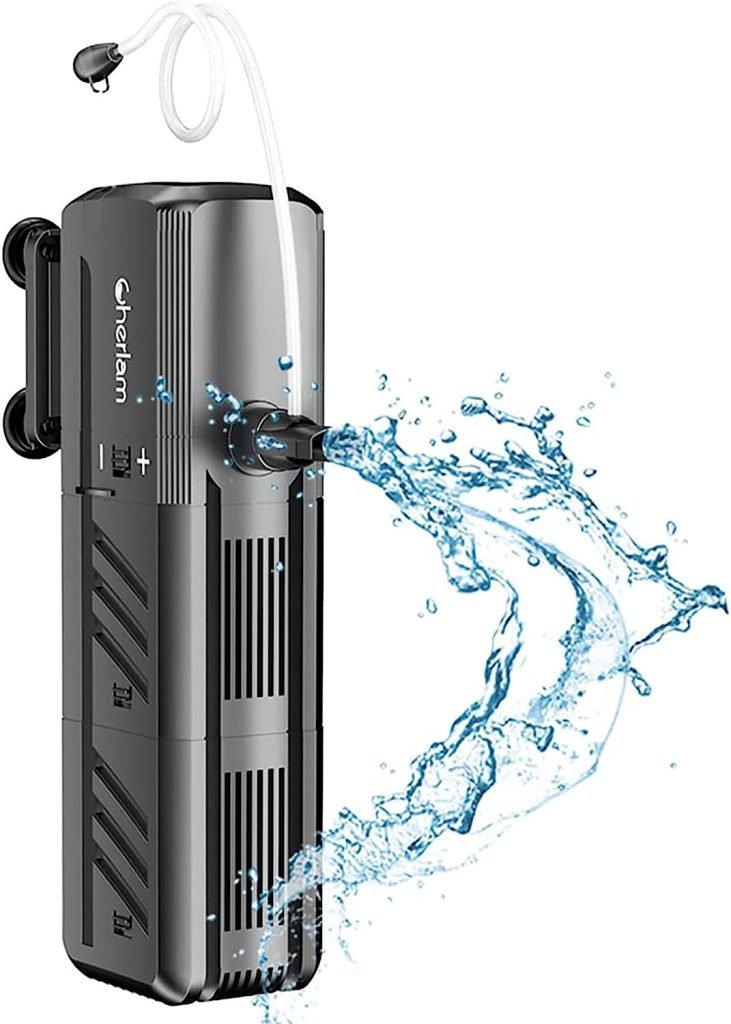
Best Filter & Pump for Guppies
Ehain Pump, Classic Filter
This is the most basic setup you can expect for your tank.
I chose this pump because of how quiet it is. It’s also incredibly versatile as you’re able to change the water flow rate to your liking.
Your pump will connect to your filter in order to get water moving in the tank.
The filter will remove solids from the tank and contain a biological element that will help beneficial bacteria. Said bacteria will balance your tank which will translate to less time spent tending for your tank
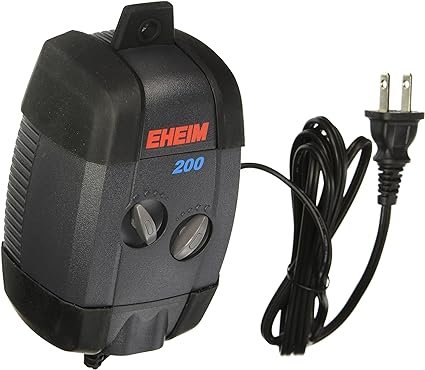

Orlushy Submersible Aquarium Heater
The Orlushy water heater is a no frills solution that fits almost every tank.
It is adjustable and pretty versatile. If you need to drop the water temp, mainly because you want to slow your fish’s metabolism then it’s just one knob turn away.
It also comes with an external thermostat to monitor the water temperature to give you a better piece of mind.
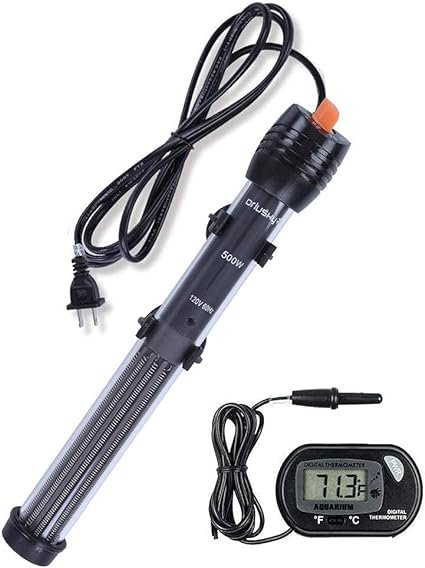
Supplementary Equipment
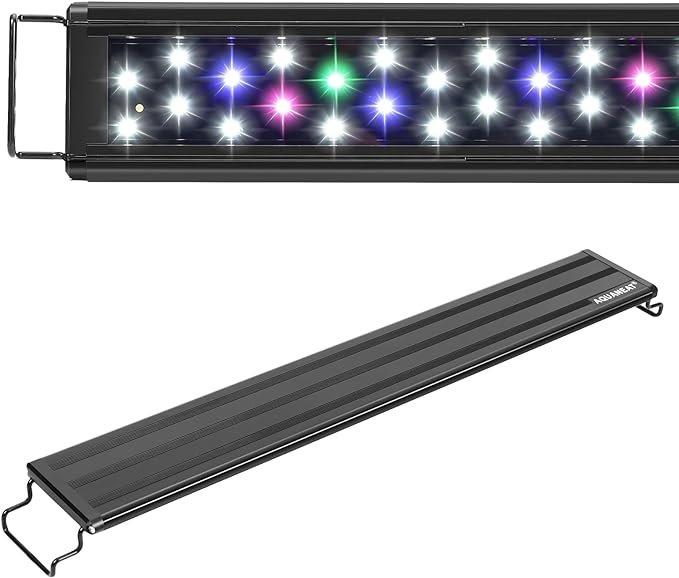
AQUANEAT LED Aquarium Light

API 5-in-1 Test Strips

API Tap Water Conditioner

Fish Net
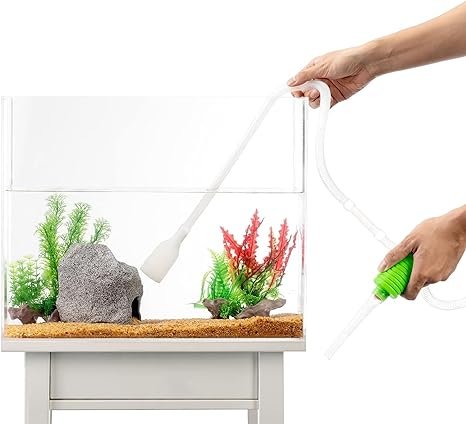
Siphon
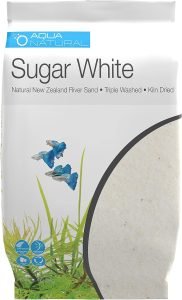
Sand Substrate
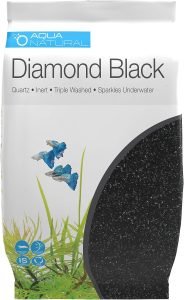
Gravel Substrate

Fish Food
Where To Buy Guppies
And Where To Buy Aquarium Plants
Local Fish and Pet Stores
You can get guppies at your local pet or fish store.
The main benefit of buying them in person is being able to see and inspect the fish. You want to see good colors and avoid fish that have any indication of illness- mainly dull colors or other indications of illness.
While big-brand national chains may only keep a small assortment of guppies, your local fish store may carry a wider variety.
Online Retailers
Many online retailers specialize in selling guppies and other aquarium fish. This option provides a wide selection of guppy strains, colors, and sizes, often delivered to your doorstep.
The standard practice in the business is to ship fish overnight directly to your door. Most time the seller will coordinate with you exactly when the item will be delivered to ensure the safety of the fish.
Fish are shipped in medicated water to ensure no harmful bacteria grow during the shipping process.
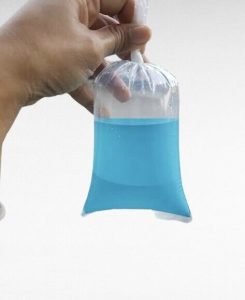
How to Find a Reputable Online Seller
There are 2 tale-tell signs for a reputable online seller: shipping method and guarantee.
Shipping
Any reputable online seller will insist on overnighting the fish. Remember- shipping is a very stressful process for guppies and the shorter it is the better it is for the fish.
A standard practice in the industry is to only ship on certain days (for example Monday through Wednesday). You would have to cover the shipping fee for overnight shipping.
Guarantee
A reputable online seller will have a live-on-arrival guarantee. That means they’ll guarantee the minimum amount of fish you ordered will arrive alive.
In some cases, they’ll just include a few more fish to account for those who don’t make it through travel.
If some fish don’t make it and you don’t get your minimum number of fish they’ll either refund it or credit you towards the next purchase.
Bear in mind that each retailer has their own rules, and in almost all cases you’d need to reach out to the seller within 24 hours of receiving your fish.
Peer to Peer
A growing movement in recent years is to buy fish directly from other fish keepers. That practice has been made possible with the rise of tech like Facebook marketplace and social media. Since it’s never been easier to connect with others who are just like you and buy the fish from them directly.
Just like professional online sellers, hobby-level breeders will also ship fish overnight and should also have an alive-on-arrival guarantee.
Conclusion
This was a lot to digest, so let’s run a quick recap-
You need a filter and heater- that’s the bare minimum. Without them, your guppies will be prone to disease or you’ll change the water every 20 minutes.
A hang-on-back filter is usually the most streamlined version. whether you get a tank kit or build your own doesn’t really matter- it’s a personal choice.
For the most part, you only need lights if you get plants. Plants have their own benefits, like hiding spaces and filtration properties (but that’s a different topic).
Now that you have all that knowledge under your belt- how do you move forward? Are you jumping in or continuing your research? Let me know in the comments!